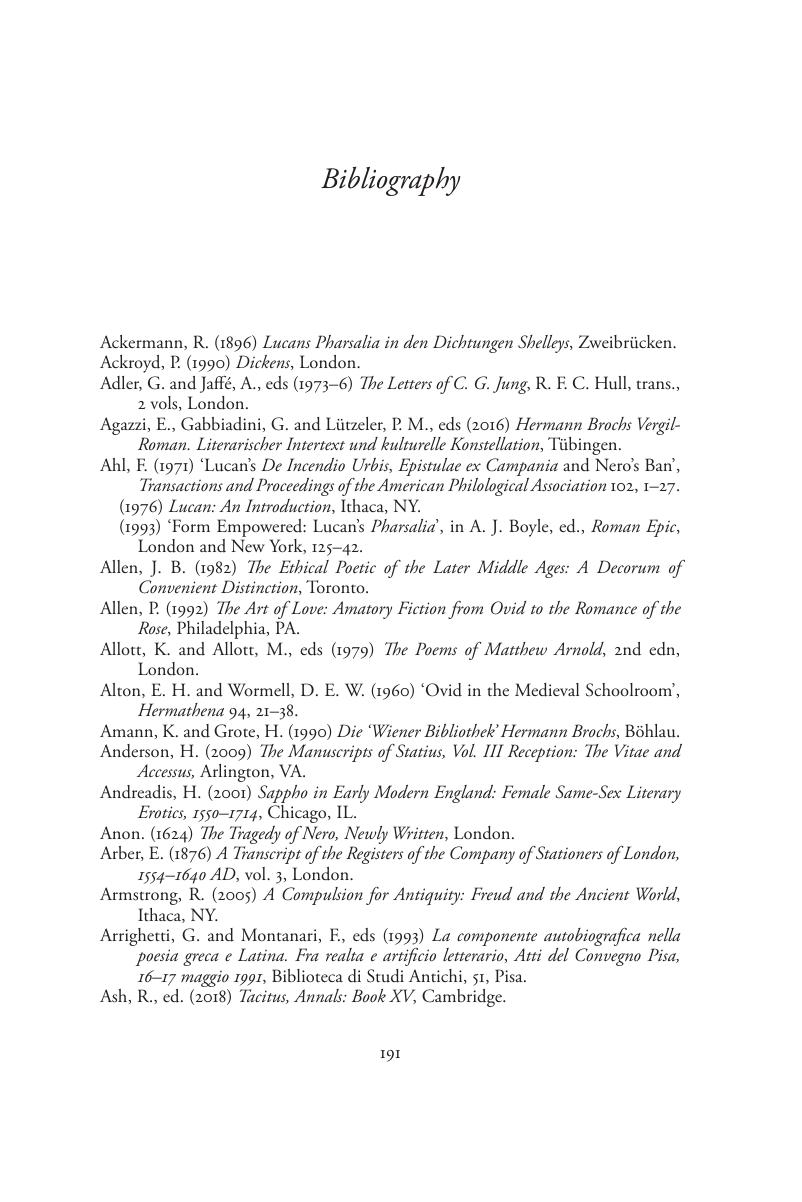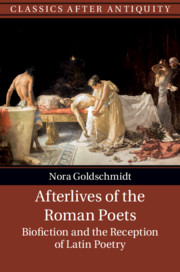Book contents
- Afterlives of the Roman Poets
- Classics after Antiquity
- Afterlives of the Roman Poets
- Copyright page
- Dedication
- Contents
- Figures
- Series Editors’ Foreword
- Acknowledgements
- Abbreviations and Note on the Text
- Introduction
- Chapter 1 Medieval Ovids
- Chapter 2 Staging the Poets: Ben Jonson’s Poetaster
- Chapter 3 Lucan and Revolution
- Chapter 4 Lucretius and Modern Subjectivity
- Chapter 5 The Death of the Author: Hermann Broch’s Der Tod des Vergil
- Post-Mortem
- Bibliography
- Index Locorum
- General Index
- References
Bibliography
Published online by Cambridge University Press: 11 November 2019
- Afterlives of the Roman Poets
- Classics after Antiquity
- Afterlives of the Roman Poets
- Copyright page
- Dedication
- Contents
- Figures
- Series Editors’ Foreword
- Acknowledgements
- Abbreviations and Note on the Text
- Introduction
- Chapter 1 Medieval Ovids
- Chapter 2 Staging the Poets: Ben Jonson’s Poetaster
- Chapter 3 Lucan and Revolution
- Chapter 4 Lucretius and Modern Subjectivity
- Chapter 5 The Death of the Author: Hermann Broch’s Der Tod des Vergil
- Post-Mortem
- Bibliography
- Index Locorum
- General Index
- References
Summary

- Type
- Chapter
- Information
- Afterlives of the Roman PoetsBiofiction and the Reception of Latin Poetry, pp. 191 - 216Publisher: Cambridge University PressPrint publication year: 2019



